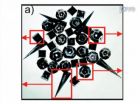(Press-News.org) CHAPEL HILL, N.C. – Triple-negative breast cancers are more biologically diverse than previously believed and classification should be expanded to reflect this heterogeneity, according to University of North Carolina researchers.
In a study published in the February issue of The Oncologist conducted by UNC and the Vall d'Hebron Institute of Oncology in Barcelona, Spain, a team lead by Charles Perou, PhD, of UNC Lineberger Comprehensive Cancer Center, examined more than 1,700 breast tumors, including 412 triple negative (TN) breast cancers, and concluded that triple-negative cancers, and basal-like breast cancers should not be considered as a single type, since more than 30 percent of triple-negative cancers lack biological markers associated with basal-like tumors.
Breast cancers are sometimes classified into four main subtypes – basal-like (often called TN), luminal A, luminal B and HER2-enriched. While targeted therapies have been developed to exploit the weaknesses of some types of breast cancers, the lack of these drug markers on TN cancers means patients with these tumors must undergo broader, more aggressive therapies.
"This is clinically very important, because TN breast cancers lack the three biomarkers used for guiding many therapies in breast cancer, so those patients do not have these therapeutic options. They are thus left with multi-agent chemotherapy as their treatment," said Dr. Perou.
The researchers found at least four disease subtypes within TN tumors, with more than 75 percent of the tumors falling into the basal-like subtype. Further research is needed to identify the distinct biomarkers shared by the expanded subtypes of TN cancers. The ultimate goal will be to target the individual biomarkers of these subtypes and create therapies that target their individual biology, according to Dr. Perou.
"Today, given that the Basal-like subtype is the majority of TN patients, I believe that if we are to make therapeutic progress against TN disease, we are going to need to target the unique biology of the Basal-like subtype" said Dr. Perou.
INFORMATION:
The research was supported by the National Cancer Institute grants (P50-CA58223–09A1), the National Institutes of Health (RO1-CA138255), the Breast Cancer Research Foundation, and the Sociedad Espanola de Oncología Medica.
Researchers discover biological diversity in triple-negative breast cancer
2013-02-13
ELSE PRESS RELEASES FROM THIS DATE:
Vitamin C is beneficial against the common cold
2013-02-13
Vitamin C seems to be particularly beneficial for people under heavy physical stress. In five randomized trials of participants with heavy short-term physical stress, vitamin C halved the incidence of the common cold.
Three of the trials studied marathon runners, one studied Swiss school children in a skiing camp and one studied Canadian soldiers during a winter exercise.
Furthermore, in a recent randomized trial carried out with adolescent competitive swimmers, vitamin C halved the duration of colds in males, although the vitamin had no effect on females.
Regular ...
Kinect teleport for remote medicine
2013-02-13
The Microsoft Kinect game controller could cut the US healthcare bill by up to $30 billion by allowing physicians and other medics to interact with patients remotely so reducing the number of hospital visits and the associated risk of infection.
Writing in the latest issue of the International Journal of Electronic Finance, Janet Bailey of the University of Arkansas at Little Rock is working with Bradley Jensen of Microsoft Corporation, in Irving, Texas, to explain how gaming technology could be used to "teleport" the knowledge and skills of healthcare workers to where ...
Additional noteworthy research to be presented at the 2013 Genitourinary Cancers Symposium
2013-02-13
ALEXANDRIA, Va. – Co-sponsors of the 2013 Genitourinary Cancers Symposium announced today important research to be presented at this year's meeting, taking place February 14-16 at the Rosen Shingle Creek in Orlando, Florida. Three of the featured studies focus on the prevention, diagnosis and treatment of prostate cancers; another study looks at a new immunotherapy for metastatic kidney cancer.
Thursday, February 14 Presentations
Abstract # 10: Long-term survival of subjects in the prostate cancer prevention trial.
General Poster Session A
Thursday, February 14, ...
Resistance is futile
2013-02-13
A team of researchers from Russia, Spain, Belgium, the U.K. and the U.S. Department of Energy's (DOE) Argonne National Laboratory announced findings last week that may represent a breakthrough in applications of superconductivity.
The team discovered a way to efficiently stabilize tiny magnetic vortices that interfere with superconductivity—a problem that has plagued scientists trying to engineer real-world applications for decades. The discovery could remove one of the most significant roadblocks to advances in superconductor technology.
Superconductors are extremely ...
Magnetic shielding of ion beam thruster walls
2013-02-13
Electric rocket engines known as Hall thrusters, which use a super high-velocity stream of ions to propel a spacecraft in space, have been used successfully onboard many missions for half a century. Erosion of the discharge channels walls, however, has limited their application to the inner solar system. A research team at Caltech's Jet Propulsion Laboratory, in Pasadena, Calif., has found a way to effectively control this erosion by shaping the engine's magnetic field in a way that shields the walls from ion bombardment.
Ions are produced in Hall thrusters when electrons ...
Long noncoding RNAs control development of fat cells
2013-02-13
CAMBRIDGE, Mass. (February 13, 2013) – Whitehead Institute researchers have identified a previously unrecognized layer of genetic regulation that is necessary for the generation of undesirable white fat cells. When this regulation is disrupted, white fat cells are unable to accumulate lipid droplets or mature from their precursors.
"We're trying to figure out what the mechanism is—what it takes to make fat cells," says Whitehead Founding Member Harvey Lodish, who is also a professor of biology and a professor of bioengineering at MIT. "The obvious reason we're interested ...
For some, deep brain stimulation brings lasting improvement in neuropathic pain
2013-02-13
Philadelphia, Pa. (February 13, 2013) – For many patients with difficult-to-treat neuropathic pain, deep brain stimulation (DBS) can lead to long-term improvement in pain scores and other outcomes, according to a study in the February issue of Neurosurgery, official journal of the Congress of Neurological Surgeons. The journal is published by Lippincott Williams & Wilkins, a part of Wolters Kluwer Health.
About two-thirds of eligible patients who undergo DBS achieve significant and lasting benefits in terms of pain, quality of life, and overall health, according to the ...
Busy beavers give Canada geese a lift, study shows
2013-02-13
A new University of Alberta study shows that busy beavers are helping Canada geese get an earlier start when the birds fly home and begin spring nesting.
Ponds in Alberta where beavers were active tended to result in earlier thaw of winter snowpack, giving the geese a better chance at reproductive success, according to the study, published recently in Mammalian Biology.
The study is the first to link beavers to early season nesting habits of Canada geese in a Northern climate.
A team led by Glynnis Hood, an associate professor in the Department of Science at the ...
'Masked' mold toxins in food should be included in safety regulations
2013-02-13
Government limits on mold toxins present naturally in grain crops should be expanded to include so-called "masked mycotoxins" that change from harmless to potentially harmful forms in the body, a new study concludes. It appears in ACS' journal Chemical Research in Toxicology.
Chiara Dall'Asta and colleagues explain that molds growing naturally on wheat, corn and other plants produce toxic substances termed mycotoxins. Some health experts regard mycotoxins as the most serious chronic dietary risk factor, greater than the potential health threats from pesticides and insecticides. ...
Origami meets chemistry in scholarly video-article
2013-02-13
February 13, 2013
Cambridge, MA: The nanotechnology research space is rapidly growing, with vast implications for the healthcare, consumer electronics, surveillance, and defense industries. However, a major limitation to this research is the ability to create particles that vary in shape and function on a micrometer or nanometer scale.
To overcome these limitations, chemical engineers at Johns Hopkins University have developed self-assembling particles that are inspired by origami, the traditional Japanese art of folding paper into complex three-dimensional shapes. ...

